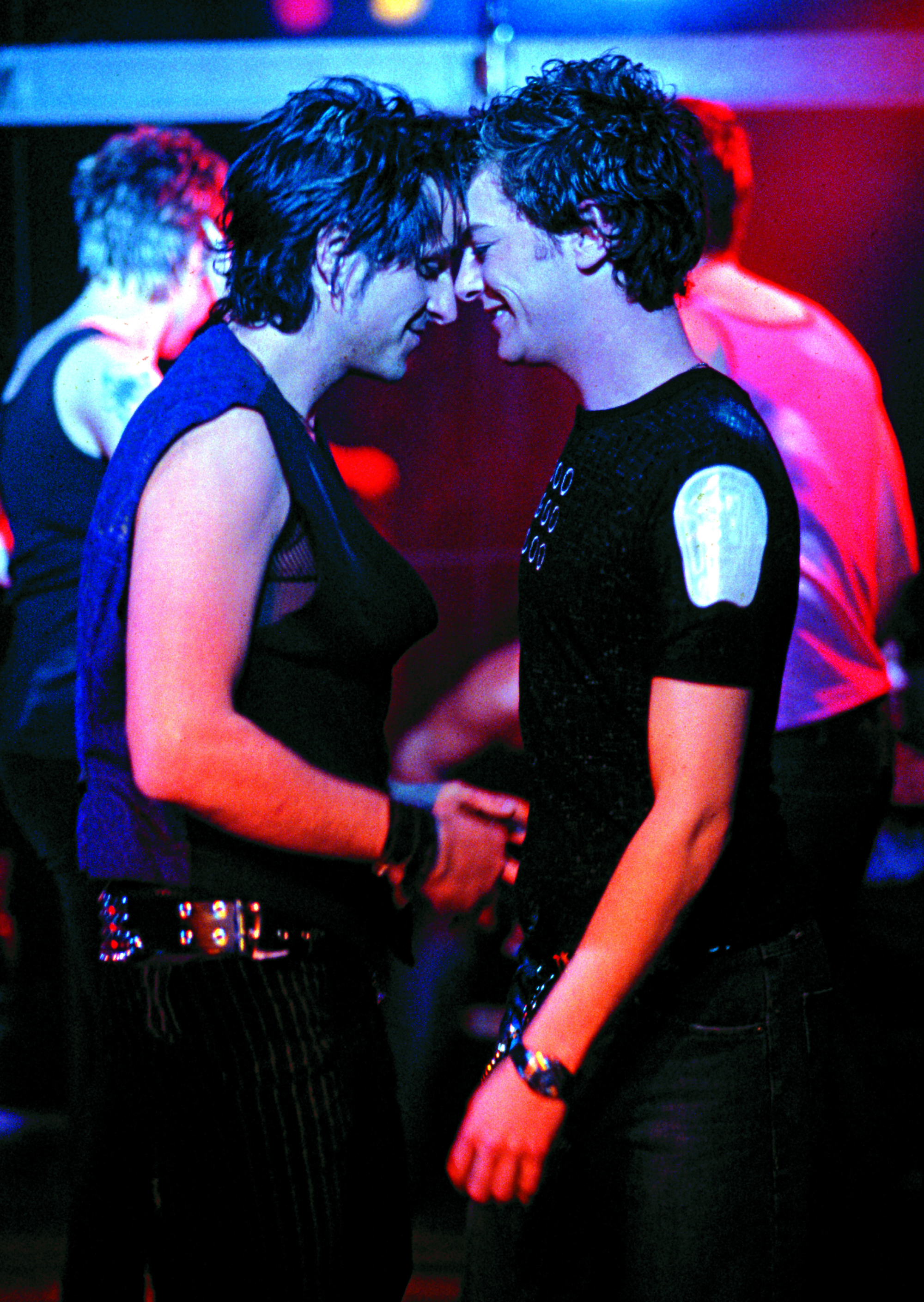Alkinos Tsilimidos’ Tom White
Tom White is the sort of film that’s like brussels sprouts: you don’t really enjoy it, but you know it’s supposed to be good for you. We’ve all sat through films like these, vaguely hoping that our attendance will be enough to help someone else save society. If you can just endure this lecture about the homeless, your conscience whispers, the sincerity of your social conscience will be confirmed. The scales will fall from your eyes and finally you will know the truth. You will be filled with revolutionary fury and lead the march to the steps of parliament. You’ll drag the politicians out, house the huddled masses in their offices and give the Salvos the night off. You’ll become part of the solution … just by watching this movie.
Don’t you feel like a better person already?[1]I’m going to hell. The bit reserved for sarcastic people and ‘Those Who Laugh’ at Funerals.
The most difficult question that one can ask those responsible for Tom White is, what drove them to make it? The obvious answer is that they are hoping to spotlight the problem of homelessness, following in a long tradition of film as polemic. The best directors of this genre, people like Tim Robbins, Spike Lee and Ken Loach, are well aware that there are people like me in the audience; they choose the rapier instead of the sledgehammer, and they know that good intentions are not in themselves worth watching. At their best they blow you right out of your seat with a devastating story rather than a devastating issue, and their passion is infectious. The story has a half-life that lasts beyond the doors of the cinema, and the audience feels something inspirational between their ears, and something inextinguishable between their ribs.
However, there are also those that seem to have a more simplistic agenda. If one is horribly cynical,[2]And I obviously am. they make films like Tom White because they see the plight of the homeless as shorthand for ‘real’. It’s the punk aesthetic at its most dogmatic: if we’re doing a film about homeless people then it must, apparently by definition, be ‘Authentic, Important and Meaningful’. A story about homeless people automatically matters. The depiction of the ‘real’ becomes fetishised, and finally an end in itself. The filmmakers congratulate themselves for having the ‘bravery’ to avoid the Hollywood route of beautiful people and beautiful stories, the DP leaves the flattering lights in the truck, and everyone’s favourite adjective is ‘dark’.[3]Michael Caine once pragmatically remarked that making films about the homeless was the most useless way to address their plight. Far better, he said, to make Terminator 2, watch the box office go ker-ching, and then give them the money. He obviously doesn’t like brussels sprouts either.
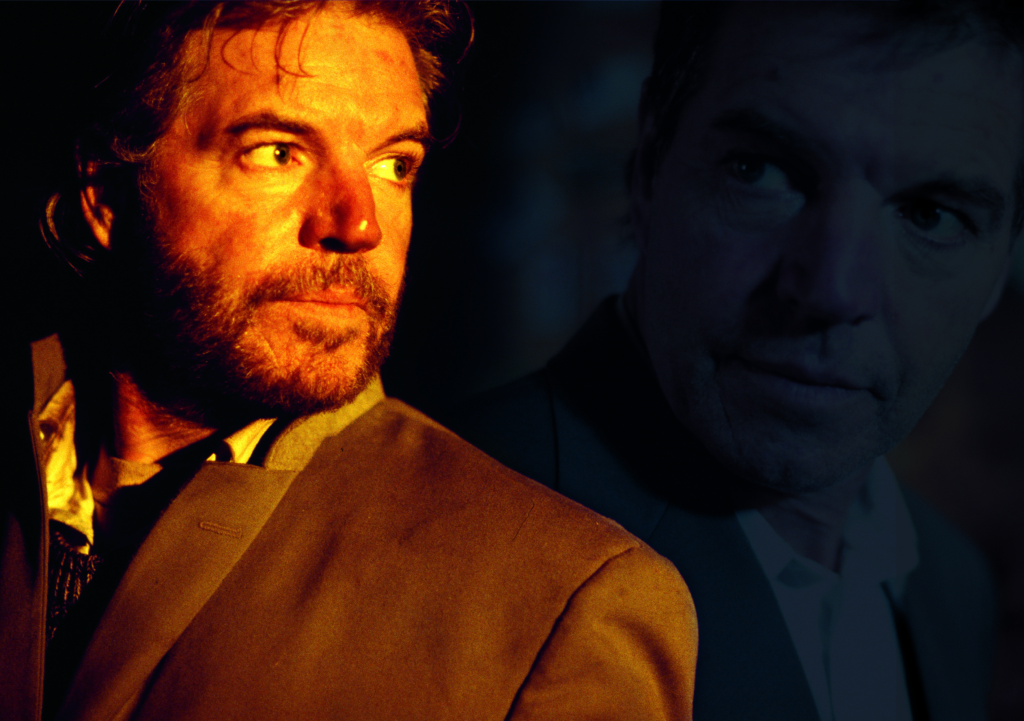
If we look at Tom’s story as a metaphor for this sort of reality tourist attitude, it starts to look worryingly plausible. While Tom’s journey is obviously no picnic, the key to his plight is that it is self-inflicted. As the film proceeded, I couldn’t silence the nagging little voice that insisted that no matter how far Tom ran away from home, there was nothing to stop him going back. Sure he’s got some hassles at work, but the scenes of his domestic life paint it as a sanctuary rather than a prison. His wife might leave some angry messages on his phone when he abruptly disappears, but the filmmakers never convince you that Tom has irrevocably burned his bridges. The upshot is that a film that seems committed to realism leaves its protagonist with an obvious parachute, and when he eventually pulls the ripcord his life reboots with remarkably little fallout. Tom may have been changed by his journey, but apparently little else has. Like the filmmakers, Tom can enter the world of the homeless and when the story is over he can leave. And that doesn’t seem very real to me.
These criticisms might be avoided if the screenplay provided some kind of solid motivation for Tom to behave as he does, but unfortunately the pivotal moment for the entire journey seems unconvincing. It’s worth noting that both of Alkinos Tsilimidos’ previous films feature protagonists seeking extraordinary escape routes from ordinary lives. Everynight … Everynight (1993) sees Dale (David Field) resign from humanity as part of his ongoing war with the brutal Pentridge authorities, while John (Field) and Bill’s (Syd Brisbane) decision to purchase the eponymous Silent Partner (2001) is driven by their desire to gamble their way into a better life. Taking these predecessors into account, Tom’s decision to live on the streets could also be read as a desperate attempt at transcendence, cutting the moorings from a familiar world and taking up residence in a new one. Aside from his struggles at work, the early scenes also establish that he lives in a typical suburban house with a typical suburban family and thus, like many similar movie characters, might seek to escape its banality. However, as noted above, Tom’s home is not the stifling environment that films like American Beauty (Sam Mendes, 1999) or Thelma & Louise (Ridley Scott, 1991) credibly depict. When his wife gently asks him why he disappeared, she might as well be asking the screenwriter, for neither man can give a satisfactory explanation. The stakes never seem high enough to justify Tom’s actions, and consequently the niggling question marks over his behaviour are not dispelled.
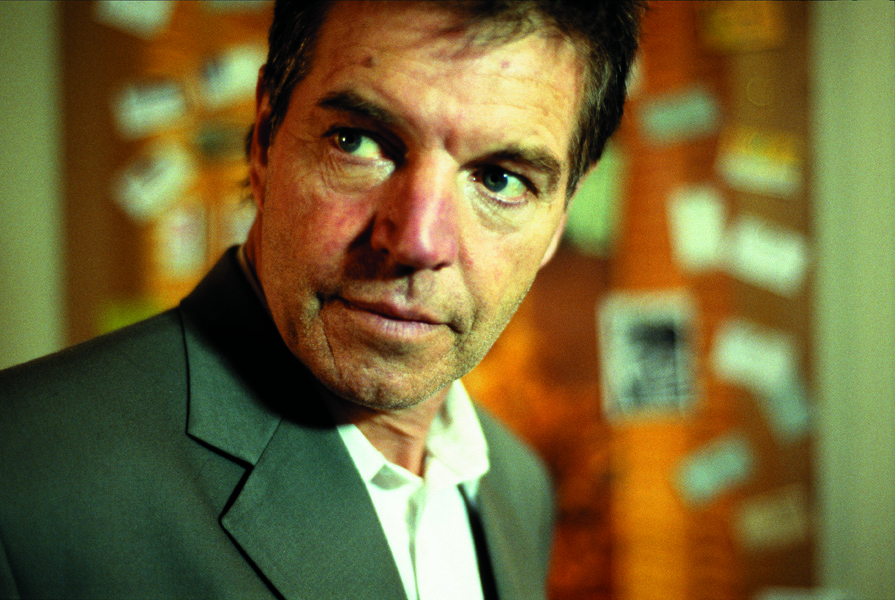
It might be that Tom’s motivation to live on the streets is intentionally opaque, but I doubt it. Overturning his boss’ desk is not a bad metaphor for his urge to destroy the things that frustrate him at work, but it’s not exactly subtle, and fails to explain why he doesn’t simply go home to recuperate as his boss suggests.[4]There are hints that Tom might be mentally ill in some way – the strange drawings that his wife discovers for one thing; the fact that he shares his name with Tom O’Bedlam, an old slang term for lunatics that were turned out onto the streets for another – but these hints are not developed. Instead, his inexplicable decision to leave his family seems to be a symptom of the filmmakers’ desire to put him in a situation rather than worry about why it has come about. Thus the raison d’être of the film begins to override narrative plausibility. Colin Friels becomes a homeless person because … well, because everyone involved wants to make a film about homeless people. The nagging, cynical little voice is proved correct and the events in the film matter a lot less than they should – for if there is no really good reason for Tom to end up on the streets, there is concomitantly no really good reason for him to stay there.
Even if we ignore this flimsy foundation, Daniel Keene’s script remains a flabby piece of work. The dialogue reeks of pretension, and the characters resemble nothing more than a selection from the ‘Homeless Movies Greatest Hits’. The themes of loneliness and addiction float artlessly on the film’s surface, with no apparent regard for subtext. Furthermore, choosing characters like a lonely rent boy or a struggling junkie to express such themes is a fairly crude decision. It might have worked if their observations reversed our assumptions in some way, much as Renton’s enthusiasm for heroin in Trainspotting (Danny Boyle, 1996) is shocking in the way a traditional sermon never could be, but sadly this is not the case. Indeed, the only surprising thing about the writing is that Keene’s previous work on Silent Partner was so adroit. On the evidence of Tom White, his skill appears to have evaporated.
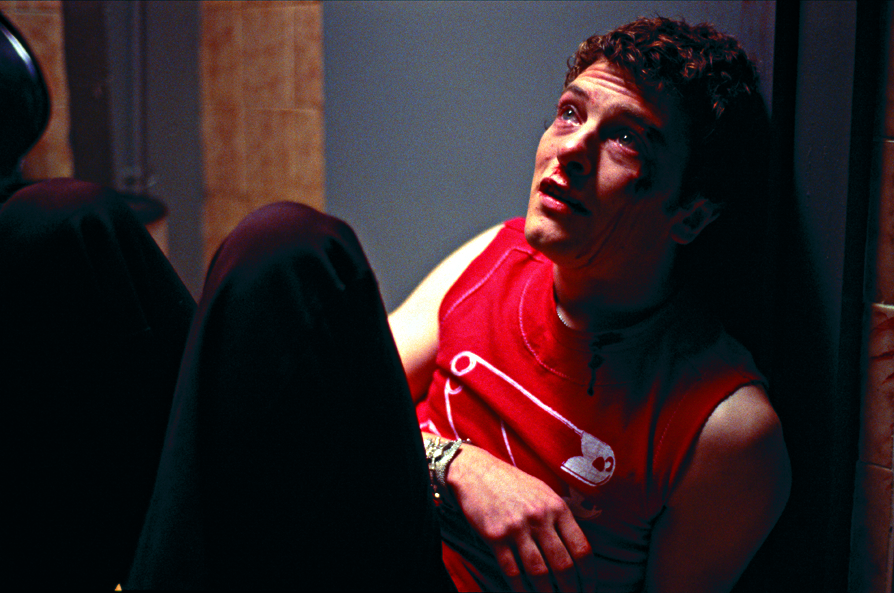
The consequence is that all the actors are hamstrung by a succession of plonking clichés. Some are more forgivable than others, but Matt’s corny lines about banishing loneliness with the help of a pill, or Phil’s taunts that Christine will inevitably get back onto heroin, hit the ear like corrugated iron. They’re not impossible to polish, but frankly why bother with them in the first place? If we see that Matt pops a lot of pills and Christine isn’t putting a needle in her arm, surely there is no need to underline it? For a film set in such a realistic milieu, ‘Dramatic Speeches’ like these clang with self-conscious craft. The insistency of the writer’s voice renders the characters transparently artificial, and there is no sense of spontaneity or grace.
Thankfully. when the film isn’t trying to be deliberately ‘Important’ it becomes a lot easier to like. The production notes describe Tom White as an odyssey and, like Odysseus, Tom’s war at work angers the ‘gods’, cursing him to wander through the weird and the dangerous. Subtle classical allusions include the generous giant Malcolm being lit to appear cyclopean in one scene, while Phil’s dog recalls Cerberus chained at the gates of the Underworld. At times the characters become almost child-like, with the repetition of dialogue such as ‘have you run away from home?’ moving the story past myth into fairytale. All of Tsilimidos’ previous protagonists resemble children at various stages,[5]Dale’s war with the prison guards in Everynight echoes the adolescent’s instinctive hatred of authority, and Daniel Keene points out in the commentary of the Silent Partner DVD that Bill and John’s relationship with the owner of their greyhound resembles that of scared little boys. and Tom White is no exception. Ironically, when he is introduced he is the most adult of them all, but we soon see him abandon his responsibilities and begin gleefully to teeter on park benches, draw obsessively and honk car horns in the middle of a dealer’s showroom.
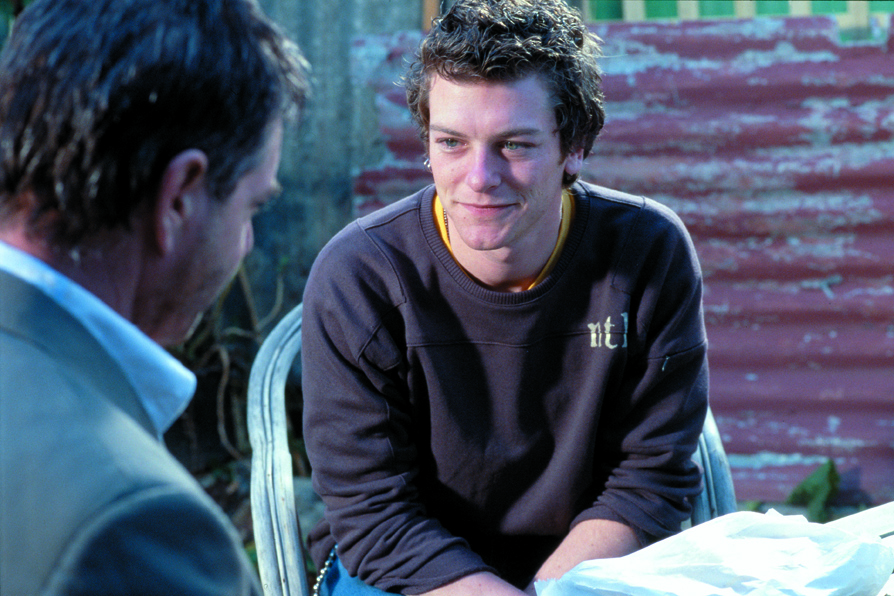
Although this decision to avoid treating street people in the usual gritty style is not exactly new (the homeless are imbued with an almost mystical power in Grant Morrison’s series The Invisibles for instance, and Robin Williams’ Parry in The Fisher King [Terry Gilliam, 1991] oscillates between madness and vivid fantasy[6]There is a danger that this sort of approach can trivialise the subject, and indeed Gilliam’s film includes a scene in which a TV executive pitches a nauseating show about noble homeless people that like being homeless, but I can’t bring myself to plump for boredom as the greater artistic achievement. Gilliam and Morrison thankfully manage to have their cake and eat it too.), it does at least assume that some of the audience will not be impressed by realism flaunted as a badge of honour. The trouble is that Tom White reverts to its po-faced template all too easily. Shocking the audience with ‘the truth’ is all very well, but shock in itself isn’t particularly difficult to achieve – all it requires is ugly images. Truly risky filmmaking would avoid such predictable situations altogether and dare to look for humour and poetry in this unforgiving environment. Basically, we don’t need Tom White to tell us how terrible it is to live on the streets; we can take that as read. What we do need is for the film to shine new light through old windows, to find characters and stories that are not simply chosen by generic reflex. That’s when we stop being dutiful and start to really care about what we’re watching – and surely that’s the point?
The galling thing is that, for all my criticisms, so much honest craft has gone into the making of Tom White. Tsilimidos’ direction in particular is charged with obvious compassion, and it’s what he shows us rather than what he tells us that really lingers in the memory. I might prefer the handmade stories of Everynight and Partner, but their stylistic debt to the stage was conspicuous. Tom White marks an important development in Tsilimidos’ approach to filmmaking, with images like Tom’s disturbing drawings, Phil flinching away from glass slowly shattering in the dark, and the broken mobile phone that maroons Tom from his old life, achieving a spartan elegance. There’s a palpable trust in these quiet visuals, and if nothing else, Tom White reveals a director who is daring to paint his pictures rather than simply sketch them.

The actors also make the most of their opportunities, and some of them defy the script’s deficiencies to deliver what will rank among their best work. The real surprise is the ragged decency that Bill Hunter brings to his portrayal of Malcolm. Bluntly, Hunter has been coasting for a long time in the Australian film industry, and after a series of appearances that look more like favours to friends, he at last delivers a performance that falls outside his comfort zone. In many ways Malcolm is the heart of the film, the counterpoint to the coldness that dominates so much of the story. He takes Tom in, he gives him a new home, and, most importantly, he dares to show the emotions that Tom is scared of. Hunter’s never been the sort of actor that seems comfortable with vulnerability, and Malcolm could easily have been another ‘Big Performance’ that avoided any real attempt at sensitivity. Instead, Hunter runs the gamut from scary to pathetic, inconsolable one moment, gregarious the next. It’s a deft, brave portrayal, and in a film full of ghosts, it is Malcolm and his humanity that haunts us most.
I’m sure that most dispatches will also mention Colin Friels, and this is understandable – Tom White is that sort of part. I must confess that I’ve always had a slight struggle believing in Friels, but I suspect this may simply be my problem.[7]See also: Sigourney Weaver; Richard E. Grant; Bruce Willis; Kevin Spacey and Cate Blanchett. They’ve all done good work, but something about their face or voice just gives me a slight blind spot when I’m trying to forget who they really are. I’m sure you’ve got your own favourites … He’s clearly a decent actor as his turns in Malcolm, Mr Reliable (Nadia Tass, 1986/1996) and Dark City (Alex Proyas, 1998) bear witness to, but it’s rare that he makes you forget you’re watching a performance. The early scenes of Tom White are probably the best examples of what I’m trying to articulate. Friels does a lot of self-consciously ‘actor-ish’ scenes, like storming out of pubs or tipping over desks, and it’s all but impossible to ignore the gears in his performing machine as they whir and click through their paces.
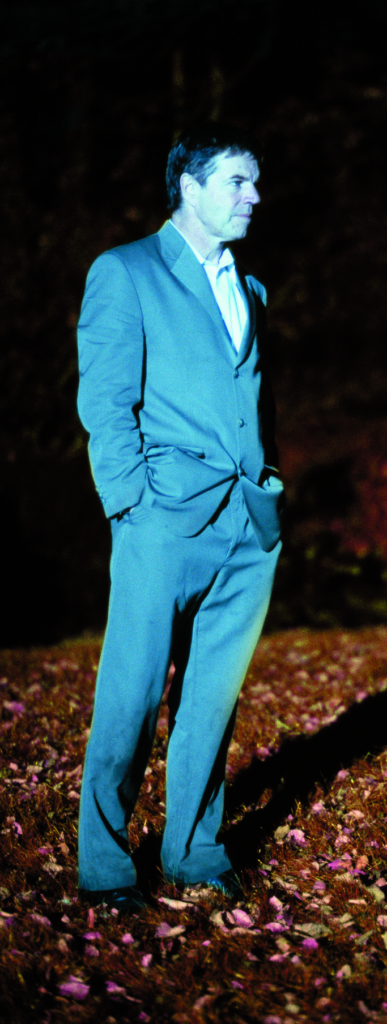
What is not in any doubt however, is his commitment to the role, and once these early hurdles are negotiated, Colin Friels begins to disappear. His hair gets greasy, his beard begins to grow and the ‘watch-me-acting-Ma’ grandstanding gives way to a quiet stillness. Tom’s arc is like the flames slowly burning out following an explosion. The anger gradually leaks away, and he seems to be striving for an emotional blankness, an equilibrium that eluded him in the story’s first act. He can’t be as disconnected from other people as he might wish, but it’s interesting watching him try.
Pointing out the flaws in Tom White is like Christopher Hitchens’ deconstruction of Mother Teresa – the criticisms you make are perfectly valid, but you feel somewhat mean-spirited for doing so. It’s plain that everyone involved has set out to make a sincere film, and the actors in particular deliver above and beyond the call of duty. Sadly, however, it’s a bad film made by good craftspeople. I’m sure it sounds odd to applaud a film’s courage while at the same time wishing for something more adventurous, but the commitment of the cast is not matched by the imagination of the screenplay. The film is too often merely dour when it should be compelling, and its insistence on clutching its realism security blanket rapidly becomes wearisome. The last thing Tom White should be is the sort of story that the audience can walk out of feeling very little of anything, but as the credits creep up the screen, that’s exactly what it is. It begs us for the emotional change that we know we can spare, but it never manages to convince us to stop walking.
Endnotes
| 1 | I’m going to hell. The bit reserved for sarcastic people and ‘Those Who Laugh’ at Funerals. |
|---|---|
| 2 | And I obviously am. |
| 3 | Michael Caine once pragmatically remarked that making films about the homeless was the most useless way to address their plight. Far better, he said, to make Terminator 2, watch the box office go ker-ching, and then give them the money. He obviously doesn’t like brussels sprouts either. |
| 4 | There are hints that Tom might be mentally ill in some way – the strange drawings that his wife discovers for one thing; the fact that he shares his name with Tom O’Bedlam, an old slang term for lunatics that were turned out onto the streets for another – but these hints are not developed. |
| 5 | Dale’s war with the prison guards in Everynight echoes the adolescent’s instinctive hatred of authority, and Daniel Keene points out in the commentary of the Silent Partner DVD that Bill and John’s relationship with the owner of their greyhound resembles that of scared little boys. |
| 6 | There is a danger that this sort of approach can trivialise the subject, and indeed Gilliam’s film includes a scene in which a TV executive pitches a nauseating show about noble homeless people that like being homeless, but I can’t bring myself to plump for boredom as the greater artistic achievement. Gilliam and Morrison thankfully manage to have their cake and eat it too. |
| 7 | See also: Sigourney Weaver; Richard E. Grant; Bruce Willis; Kevin Spacey and Cate Blanchett. They’ve all done good work, but something about their face or voice just gives me a slight blind spot when I’m trying to forget who they really are. I’m sure you’ve got your own favourites … |
